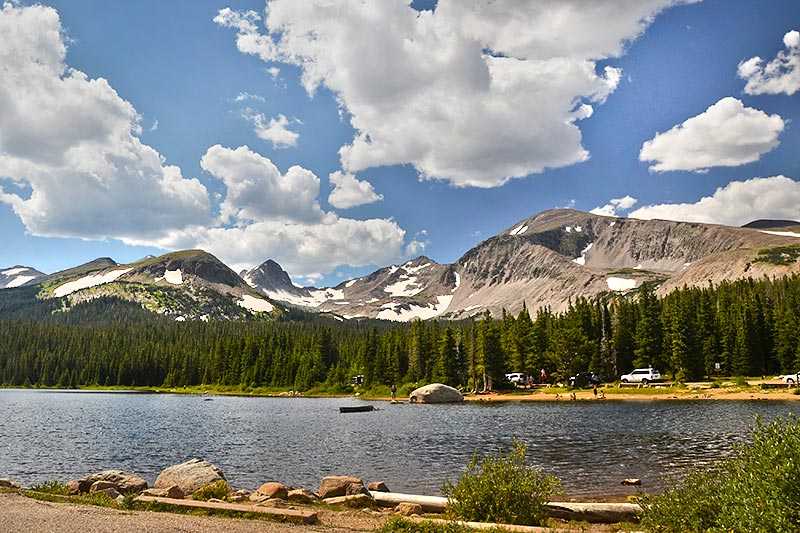Rocky Mountain National Park
About Rocky Mountain National Park
The Rocky Mountain National Park was established in 1915 and was designated as an International Biosphere Reserve in 1976. It is situated in Colorado an...
About Rocky Mountain National Park
The Rocky Mountain National Park was established in 1915 and was designated as an International Biosphere Reserve in 1976. It is situated in Colorado and covers 1,075 km2 (~415 mi2). Over three million tourists visit the area each year.
Geography
The park is bisected by the Continental Divide, giving the east and west areas of the p...
Things to do near Rocky Mountain National Park
Attractions near Rocky Mountain National Park
Activities
About Rocky Mountain National Park
About Rocky Mountain National Park
The Rocky Mountain National Park was established in 1915 and was designated as an International Biosphere Reserve in 1976. It is situated in Colorado and covers 1,075 km2 (~415 mi2). Over three million tourists visit the area each year.
Geography
The park is bisected by the Continental Divide, giving the east and west areas of the park a very different feel. While the east tends to be drier and is more rugged with heavily glaciated peaks and cirques, the west is wetter and dominated by lush forests.
At least 60 mountains are in excess of 3,657 m (~12,000 ft), with the highest being Longs Peak at 4,346 m (~14,259 ft), which can be seen from anywhere in the park. It is a popular attraction for climbers of all abilities, although there is only one non-technical hiking path, Keyhole Route, which is eight miles in length and encompasses an overall elevation gain of 1,478 (~4,850 ft). This route is typically snow and ice free from mid-July to mid-September.
What to explore
A good way to view the splendid scenery is by travelling the Trail Ridge Road. This is the highest continuous paved road in the US and crosses the Rocky Mountain National Park from Estes Park in the east to Grand Lake in the west. Note, though, that it is closed during winter due to snow and ice.
To explore on foot, the park has over 578 km (~359 mi) of designated walking and hiking trails, ranging from short strolls along relatively level lakeside paths to steep mountain peak climbs. In the winter, cross-country skiing and snowshoeing are popular on the snow-covered trails.
Sport fishing is permitted in the 150 lakes and 724 km (450 mi) of streams in the park. The only trout native to the area is the greenback cutthroat and Colorado River cutthroat – other species have been introduced in the past. Park authorities have been restoring native species and removing non-native ones since the 1970s.
